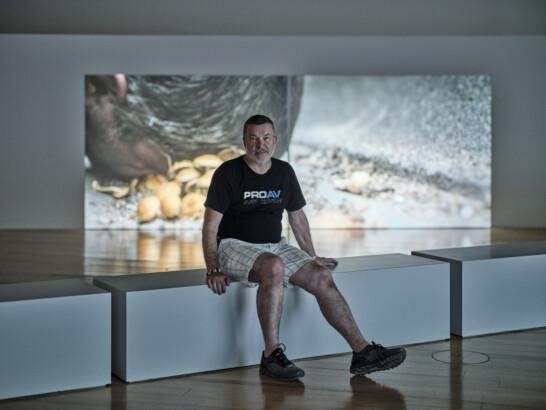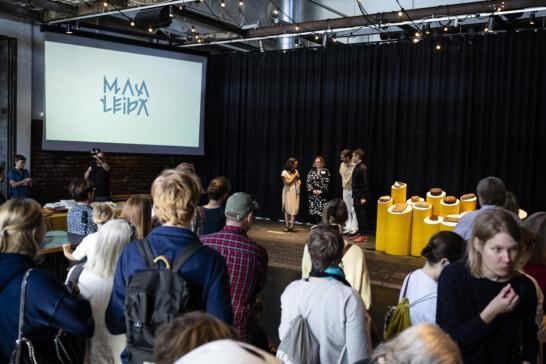Ecoblog
How to promote sustainable eating in an art organization?

Food has a major impact on the climate, biodiversity, and the state of the Baltic Sea. It is also a very personal matter, bound up with a lot of feelings and vested interests. What is the role of the workplace, and how do we promote sustainable eating in an art organization?
Alongside housing and transport, food is the individual’s most significant generator of climate emissions. According to statistics, the average Finn eats or drinks more than 2500 times a year. Altogether Finns manage 14 billion mealtimes a year! So it’s no wonder that the food production and distribution chain emits approximately approximately 25% of Finland’s greenhouse emissions.
We might joke that the carbon footprint from an art organization’s staple diet is small simply because it consists mostly of champagne. But it’s true that food accounts for only a small component of art-organization budgets. Catering at events and meetings, lunches at restaurants, and packed lunches for day trips – their carbon footprint is the organization’s direct responsibility. In contrast, employees’ personal choices are not included in the organization’s carbon budget. But there are numerous ways that a workplace can encourage sustainable mealtime practices. Here are some examples.
How to support sustainable eating practices in an art organization:
DIRECT IMPACT:
- CATERING AT EVENTS. Use events as a showcase for new, ecological taste sensations. A competent catering service or restaurant can conjure presentable dishes out of ecological raw ingredients. Potatoes and other root vegetables are top of the class in climate foods, roach dishes remove nutrients from Baltic, while organic fare fosters soil fertility. Also, find out where the establishment’s electricity and heating come from, and how much transportation is involved in getting the raw ingredients. The next step is avoiding waste.
SUPPORTING EMPLOYEES:
- TOGETHER. Discuss how the work culture could encourage more sustainable choices.
- SELF-MONITORING AND ANALYSIS. Do meals involve recurring challenges? Too much meat, excessive amounts of chocolate, lots of packaging waste, uneaten packed lunches? Analyse how time constraints, knowledge, emotional states, and the available options affect choices.
- TIME AND ORGANIZATION. Is there time for a breather and a visit to a local eatery on your lunch break? Do you have time in the evening to make food for the next day? How can you affect these issues? Learning new routines takes time. Divide tasks into parts, write a to-do list and set a reminder in your phone.
- KNOWLEDGE AND MOTIVATION. The workplace coffee table can be an excellent arena for exchanging recipe tips and cooking tales. A really enthusiastic team of workers could pay a chef to teach them how to make bream fillets or pea falafels. You can experiment with joint cooking sessions, remotely or live!
- ADOPT A RESTAURANT. Using local food services is a good idea when there is vegetarian food on the menu and waste is minimized. It can be good to let the owner of a small restaurant know what day of the week you will eat there or when you have your summer holiday. You can also see if you can make a deal with a local restaurant on collecting that day’s leftover meals.
- PRIZES, COMPETITIONS AND CAMPAIGNS. Sustainable practices can also be promoted with playful competitions. Vegetarian Month in October and Veganuary are already traditional campaigns that the whole team can take part in. You can also just draw a flower or write an aphorism to acknowledge a colleague who has remembered to bring a packed lunch every day of the week or fried Baltic herring for the first time in their life. It’s important to remember to reward your own and others’ successes! 😊
This article is part of a series published in 2020 about the carbon footprint of an art production, written by IHME eco-coordinator Saara Korpela.
Read all Ecoblog posts published in 2020:
- What do calories and carbon dioxide have in common?
- Time to start carbon footprint calculation!
- How to calculate the carbon footprint for heating?
- Small or large scale, emissions can be brought down
- Carbon footprint of art-production at IHME
- How to promote sustainable eating in an art organization?
- The carbon footprint of an event
- Miles and meetings
- Carbon footprints of art organizations and Carbon Challenge 2030


